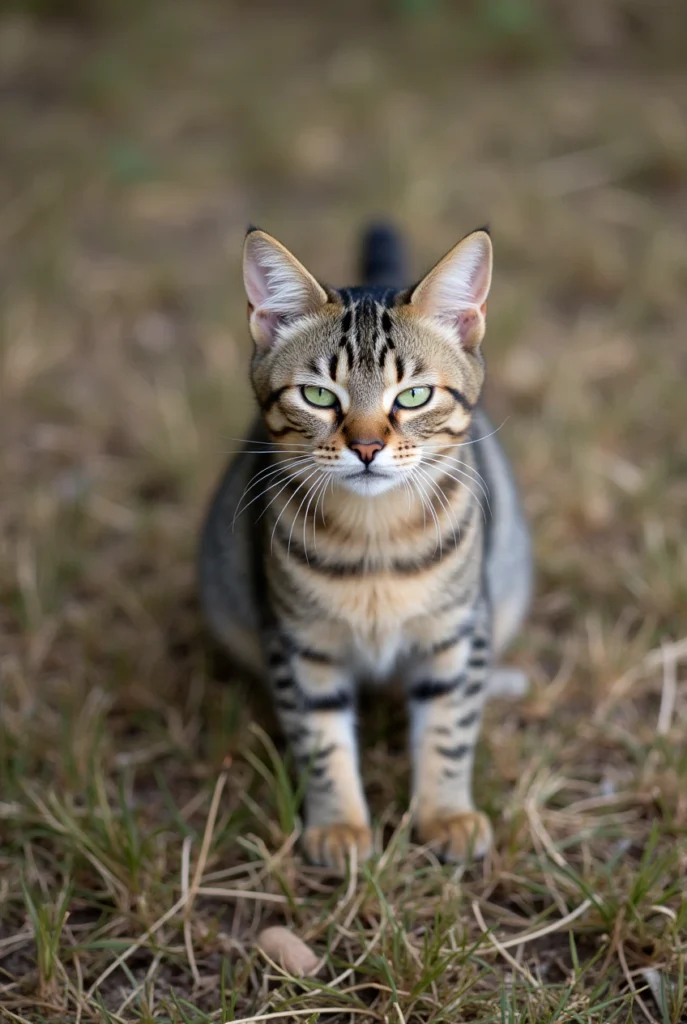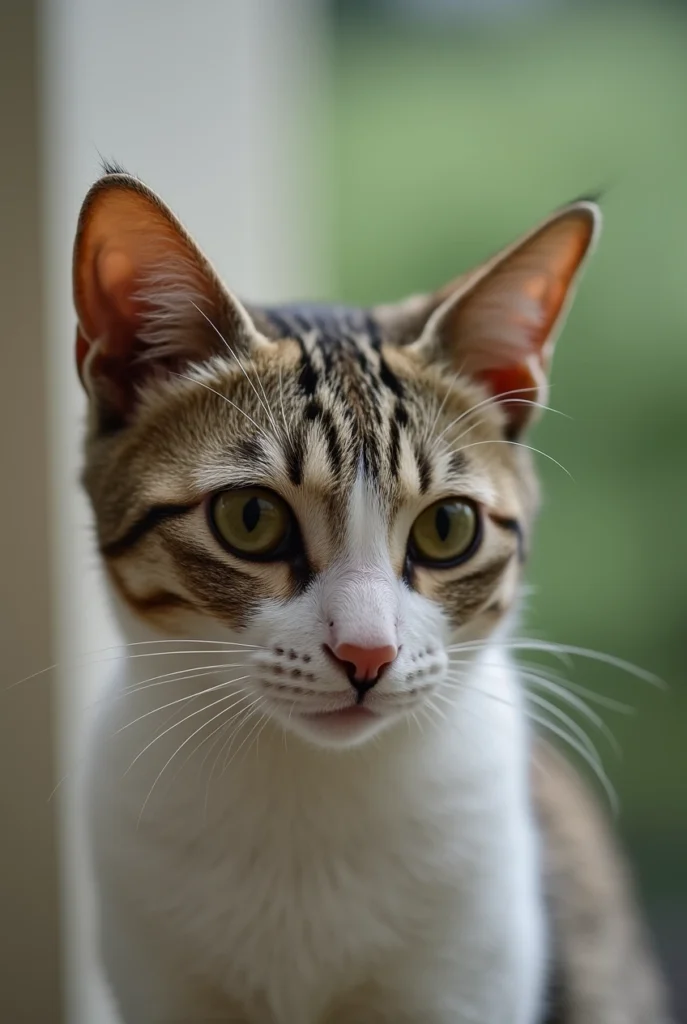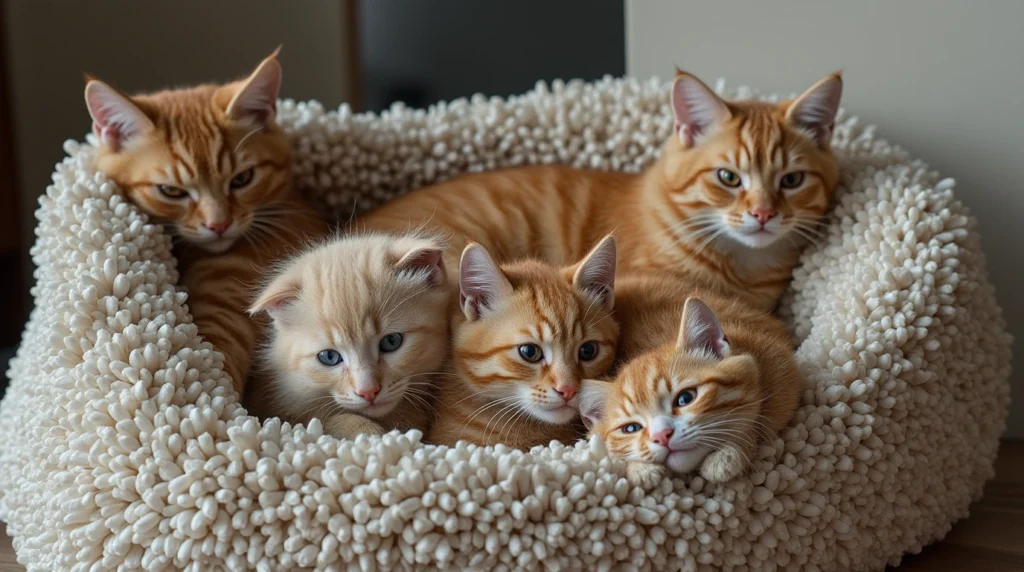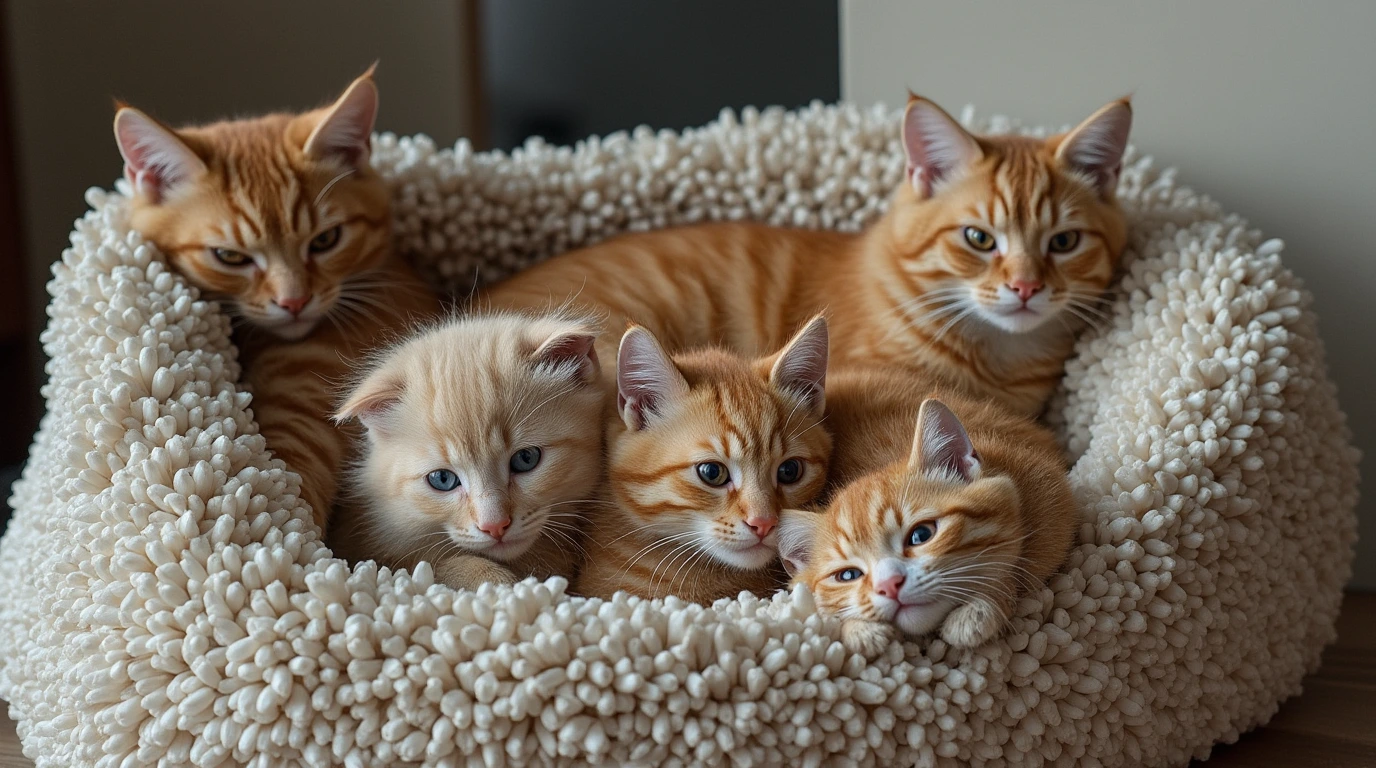Cats of Lithuania – If someone asked you to picture the soul of Lithuania, your mind might race to amber coastlines, pagan traditions, or the poetic rhythm of its language. But what if I told you that a small, whiskered presence quietly threads its way through all of that? Yes — the cat. Lithuania’s relationship with cats isn’t loud or commercialized. It’s subtle. Intimate. Embedded in the country’s culture in ways that most travelers — and even many locals — don’t immediately notice.
From ancient fire spirits shaped like felines to modern republics where cats are treated as official citizens, the story of the cat in Lithuania is far more than cute café companions. It’s cultural code. Emotional shorthand. And, in some places, even political satire.
In this article, we’re pulling back the curtain on Lithuania’s low-key feline obsession. You’ll discover how cats have crept into everything from pagan mythology to art installations, public monuments, and the poetic laws of the self-declared Republic of Užupis. Whether you’re a curious traveler, a mythology buff, or just deeply in love with all things feline, there’s something here that will surprise you.
Let’s start by digging into something older than cat memes — ancient Baltic folklore — where cats weren’t just pets… they were sacred. Cats of Lithuania.
Table of Contents
Historical Whiskers: Cats in Lithuanian Folklore and Paganism

Before cats curled up on café windowsills in Vilnius or strutted down Užupis like they owned the place (because they kind of do), they had already claimed a sacred place in Lithuania’s mythological past. In fact, cats weren’t just companions — they were intermediaries between fire and spirit, guardians of the home, and in some traditions, divine protectors.Cats of Lithuania.
Gabija: The Cat-Spirit of Sacred Fire
At the heart of Lithuania’s pagan past burns Gabija — the fire goddess. But Gabija wasn’t imagined as a roaring, fearsome flame. Often, she took the form of a cat — a quiet, warm, yet powerful presence. In homes that practiced the old ways, Gabija wasn’t just a tale for children; she was a spiritual household member. Families would tend to their hearth as if tending to a living being — and sometimes they literally believed Gabija, in cat form, might be watching.Cats of Lithuania.
The cat here wasn’t random. Think about it — cats gravitate toward warmth, they move silently like smoke, and they demand respect on their own terms. In Gabija’s feline incarnation, the Lithuanian people found a symbol that was both practical and mysterious. The idea that disrespecting a fire — or mistreating a cat — could bring misfortune wasn’t superstition; it was sacred etiquette.Cats of Lithuania.
Cats in Baltic Neopaganism Today
Fast forward to modern Lithuania and you’ll find Romuva — the revival of ancient Baltic faith — still honoring these traditions. Cats continue to appear in rituals, stories, and symbolism. They are not deified, per se, but they are treated with a sort of reverence, as if they still carry some ember of Gabija’s warmth.Cats of Lithuania.
In urban centers, you might see neopagan murals featuring fire and cats intertwined, or handmade charms of cats left at community altars. These aren’t tourist gimmicks. They’re cultural echoes — reminders that Lithuania never completely severed its spiritual link with nature… or with its cats.Cats of Lithuania.
Were Cats Considered Omens or Protectors?
Short answer: Both. In pre-Christian Lithuania, cats were often seen as protectors of the hearth and home. If a cat refused to enter a house or hissed at a guest, it wasn’t ignored — it was interpreted. Conversely, a cat sleeping near a newborn was believed to bring warmth and protection.Cats of Lithuania.
Užupis: The Republic Where Cats Reign Supreme
To understand Lithuania’s love affair with cats, you have to visit Užupis — a bohemian district of Vilnius that declared itself an independent republic in 1997. But don’t expect embassies or border patrols. This is a “micronation” of artists, poets, and free spirits. And at its core? Cats. Lots of them.Cats of Lithuania.
More Than Mascots: Cats as Citizens
Užupis doesn’t just tolerate cats; it reveres them. One of the unofficial symbols of the republic is a chubby, indifferent cat — an emblem of autonomy, mood swings, and quiet observation. Traits, coincidentally, also shared by Užupis itself.
In fact, Article 12 of the Užupis Constitution (yes, they have one, and it’s engraved on a wall in 23 languages) reads: “A cat is not obliged to love its owner, but must help in time of need.” That’s not just whimsy. It’s cultural ethos. In Užupis, cats model the kind of coexistence this quirky republic aspires to: respectful distance, fierce independence, but surprising loyalty when it counts.Cats of Lithuania.
Ponulis: The Feline Ambassador
At the center of it all was Ponulis — a cat who became an urban legend in his own lifetime. Ponulis wasn’t just any stray. He “belonged” to the people of Užupis. Shopkeepers left food out for him. Artists painted murals of him. Tourists tried to photograph him like a celebrity. And when he passed away, the mourning felt communal. People laid flowers. Someone left a tiny candle. A poetic cat, gone, but immortalized in Instagram hashtags and barroom stories.Cats of Lithuania.
Can You Really See Cats Roaming Užupis?
Absolutely. Take a stroll through its cobbled streets and you’ll spot them perched on windowsills, patrolling garden fences, or just sunbathing like aristocrats. They’re not just present — they’re part of the architecture, like chimneys or balconies.Cats of Lithuania.
Kačių Kavinė: Where Coffee Meets Cat Companionship
Tucked into a quiet street just off Vilnius’ bustling Gediminas Avenue is a haven where the coffee is hot, the mood is mellow, and the staff? Mostly purring. Welcome to Kačių Kavinė, Lithuania’s first cat café — a place where locals and tourists alike come for a cappuccino and stay for a cuddle.Cats of Lithuania.

Not Just a Café — A Mission
While it’s easy to get swept up in the cozy aesthetic — soft lighting, paw-print wallpaper, the occasional meow slicing through the jazz playlist — Kačių Kavinė isn’t a novelty spot. It’s a sanctuary. The café was founded with the mission of rescuing cats and giving them a temporary (and sometimes permanent) home.
Each resident feline is either up for adoption or has already been adopted and chosen to stay. It’s a revolving cast of characters: shy tuxedos, sleepy tabbies, diva-like Persians. And each cat has its own backstory, detailed in little bios on the walls. Some were found wandering near train tracks. Others were surrendered by overwhelmed owners. All are treated like royalty. Cats of Lithuania.
The Experience: Fika with Fur
Visitors are encouraged to interact gently with the cats while enjoying their drinks or pastries — but there’s no forced interaction. Cats roam freely, and if one hops onto your table mid-latte, consider it an honor. Regulars often describe the café not just as a coffee shop, but as a kind of therapeutic zone. For some, it’s a place to unwind after work. For others, it’s a weekly ritual to de-stress or reconnect with softness in a hard world. Cats of Lithuania.
H3: Can You Adopt a Cat from Kačių Kavinė?
Yes — and many do. The café works with local shelters to facilitate safe, screened adoptions. You won’t leave with a cat on impulse, but you might leave thinking about it. Every adoption frees space for another rescue — and adds another story to the café’s living tapestry. Cats of Lithuania.
Feline Footprints: Cat Art and Monuments Across Lithuania
Cats don’t just walk the streets of Lithuania — they’re immortalized in its stone, bronze, and public imagination. From tucked-away alley sculptures to full-blown street art murals, the country has created an informal feline trail, one that tells stories of independence, warmth, and a quietly quirky national character. Cats of Lithuania.
Klaipėda’s Whiskered Welcome
Let’s start by the sea — in Klaipėda, Lithuania’s maritime gem. Hidden in the city’s Old Town is a small, bronze cat statue perched atop a red-brick pedestal. Locals call it the “Magical Cat.” The legend? If you rub its nose, it brings good luck. This isn’t some kitschy tourist trap — it’s a beloved charm, rubbed shiny by years of superstitious fingers.
Just steps away, a mischievous mouse statue stares down the cat from across the square — a whimsical battle frozen in time, reflecting Klaipėda’s playful urban spirit.
Marijampolė’s Street Art Menagerie
Known as Lithuania’s “street art capital,” Marijampolė bursts with murals — and cats often slip into the background, or sometimes steal the show. One wall features a sleepy tabby lounging atop an abstract cityscape. Another hides a sly black cat behind neon-colored flowers. These aren’t accidental. In conversations with local artists, some admit they include cats intentionally — as silent symbols of resilience and local warmth.
Vilnius & Beyond: Cats in the Corners
Vilnius itself is no stranger to feline homage. Beyond Užupis, you’ll find shop signs carved with cat silhouettes, balconies adorned with wrought-iron cat figures, and even entire staircases where cats — real or sculpted — sit and observe foot traffic. It’s as if the city gave cats the official job of passive sentinels.
Is There a Formal Cat Art Trail in Lithuania?
Not officially — yet. But many travelers and bloggers have created DIY “cat trails,” mapping out sculptures, cafés, and murals. If you’re the type who likes scavenger hunts with a side of folklore, this might just be your ideal way to explore Lithuania.

Contemporary Cat Culture: The Modern Lithuanian Feline Affair
For all the myths and monuments, what really makes the relationship between cats and Lithuanians so compelling is how quietly — and consistently — it plays out in daily life. This isn’t some curated feline fantasy for tourists. It’s a lived rhythm. One that you feel in the spaces cats occupy — and how those spaces adapt around them.
A Quiet Pact: Street Cats and Community Trust
Lithuania, like many European countries, has its share of free-roaming cats. But what stands out is how they’re treated. In small towns and residential districts of cities like Kaunas or Šiauliai, you’ll often see modest cat houses — miniature wooden shelters placed near parks, courtyards, or apartment blocks. Locals bring food. Someone replaces the bedding. No one boasts about it. It’s just… done.
There’s an unspoken social contract here. The cats don’t “belong” to anyone, but they are acknowledged. Respected. Not pitied, not pampered — just allowed to exist with dignity.
Cats in Shops, Offices, and Bookstores / Cats of Lithuania.
It’s not unusual to walk into a bookstore in Lithuania and find a cat asleep on the counter. In some antique shops, they nap beside dusty volumes or gently swat at feathers tied to string bookmarks. And no one acts surprised. Cats here are not mascots — they’re ambient coworkers. They don’t beg for attention. They receive it only when they choose.
In smaller businesses, it’s often the same story: one cat, one unofficial job — guarding the register, greeting the regulars, or curling into the sunniest spot by the door.
How Do Lithuanians View Cat Ownership Today?
While cat ownership has grown, especially among younger city-dwellers, there’s a noticeable lack of obsession or over-curation. Cats aren’t “fur babies.” They’re not Instagram trophies. They’re simply companions — independent beings who are welcomed on their own terms. And maybe that’s what makes the bond so strong.
Embracing the Feline Fabric of Lithuania- Cats of Lithuania.
So what does it say about a country — when its mythology honors cats as fire spirits, its artists sculpt them into public squares, and its cafés build safe homes around their personalities? It says something deeply human, ironically. That independence doesn’t have to mean isolation. That softness can still survive in concrete spaces. That there’s room, even in a post-Soviet, fast-modernizing society, for quiet rituals of care.
In Lithuania, cats aren’t elevated to icons — but they aren’t ignored either. They’re allowed to be present, to exist without performative meaning. Maybe that’s what makes their presence so touching. It’s not loud affection. It’s quiet respect.
If you walk through Užupis or sip a latte beside a sleeping tabby in Vilnius, you won’t see a spectacle. But you’ll feel something. A subtle hum of coexistence. A shared understanding. A moment where the boundaries between human and animal, myth and memory, dissolve — just a little.
So next time you’re in Lithuania, keep your eyes at cat-height. You might just discover a side of the country that most guidebooks never mention — but that’s been there all along, whiskers twitching in the Baltic wind.
Cats of Lithuania. Cats of Lithuania.

